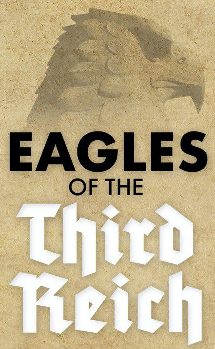Type: Sculptor and Designer
Born: July 11, 1879 (Koblenz)
Death: January 6, 1950 (Adenau), His grave is in the Melaten cemetery in Cologne (hall 31).
Also known as Joseph Pabst or Jakob Joseph Pabst. Josef Pabst designed a wide variety of eagles in the 1920’s and during the Third Reich period – these include the wide-wing political example that is most commonly encountered and found in three sizes, the Luftwaffe example also found in three sizes, a bronze Nuremberg eagle variant and numerous other desk eagles.
Josef Pabst (1879, Koblenz – 1950, Adenau) was a German sculptor. In 1896, Pabst first learned sculpture at the Royal District Building Trade School in Kaiserslautern. After further studies in Karlsruhe, Munich, Berlin and Paris, he lived in Cologne. Josef Pabst in addition to the artists Otto D. Douglas-Hill and Werner Peiner, were valued by the architect Ernst Sagebiel and were involved in the design of the Reich Aviation Ministry. Josef Pabst works also include inlay work that was exhibited at the NS-Ordensburg Vogelsang and has been preserved in the building at Landsbergstrasse 16 in Cologne.
Josef Pabst produced a number of different style desk eagles during the 3rd Reich era. Known to collectors as simply the ‘Pabst Eagles’, these bronze eagles are characterized by fully outstretched wings accentuating the flowing curves of the stylized feathers, an intricate chest pattern and an extremely detailed wreath surrounding the swastika. The original eagles are usually signed J.Pabst or Pabst under the rear of the wreath or on the base of the bronze pillar connecting the eagle to the marble mounting plinth and are also sometimes foundry marked. None are ever exactly alike due to the ‘lost-wax’ casting process used to manufacture them. They were hand produced in very limited numbers and as such are far rarer than the ‘Nuremberg’ style eagle and originals are always highly sought by collectors.
Works:
- Pabst Eagles
- Pabst Desk eagle – style 1
- Pabst Desk eagle – style 2
- Pabst Desk eagle – style 3
- Josef Pabst Nuremberg
